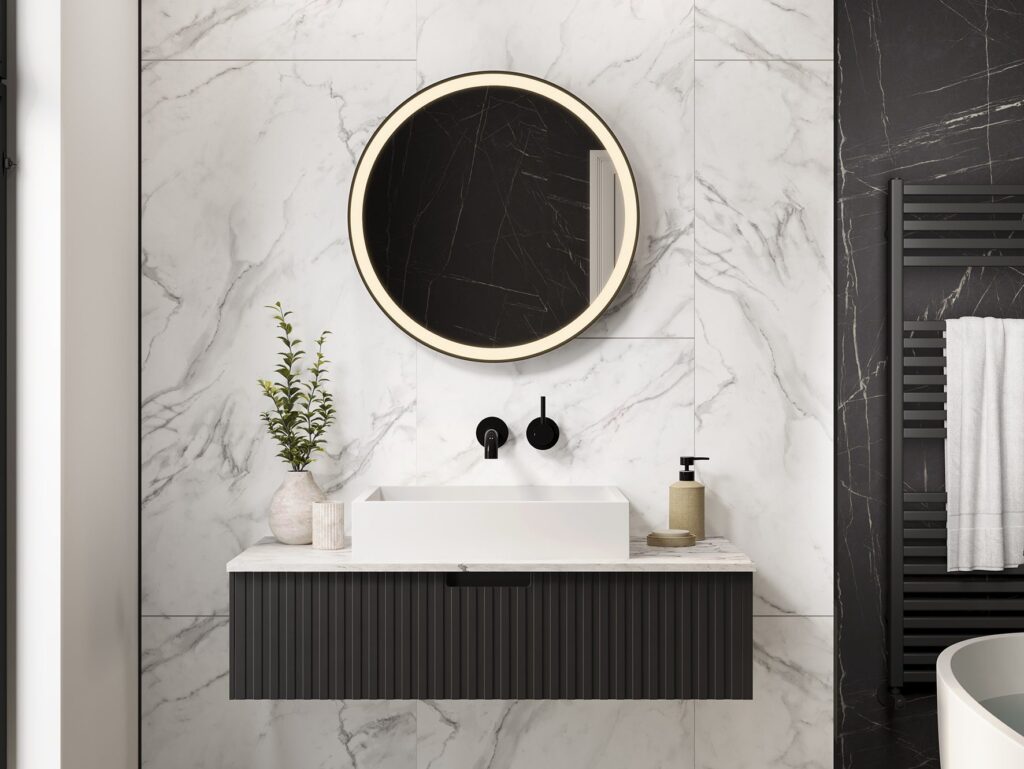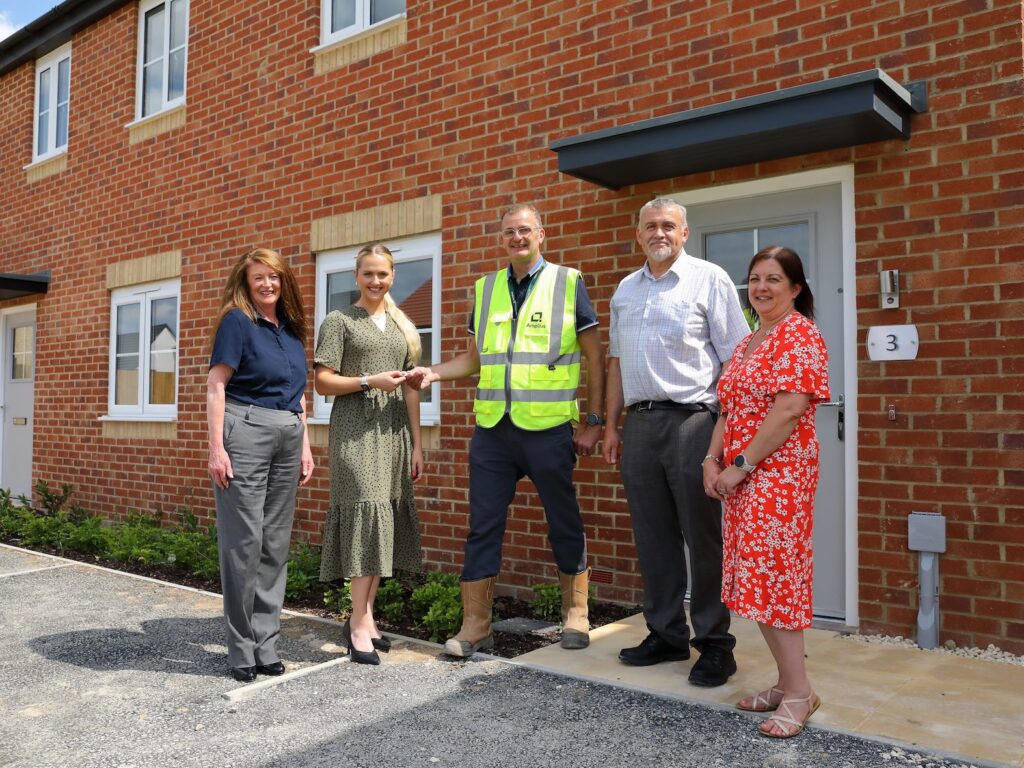The broadband world has changed and consumer demand has skyrocketed. Housebuilders are now presented with new challenges when it comes to fibre options
Broadband usage has become imperative in today’s society, with remote working and education and the change to the living environment. With home working now the norm, there’s a real drive to address and exceed resident’s connectivity requirements with a full fibre connection.
Liam McAvoy, Managing Director, Business Development, Hyperoptic discusses exclusively for Showhome magazine how the consumer demand for broadband has changed over time, and the new necessities for housing developers to consider and promote.
If you’d asked a developer ten years ago about their broadband provision, you’d have been met with confusion. The broadband provision was out of their purview. The resident was subject to a postcode lottery, but, in the simplest of terms, it just wasn’t the developer’s problem.
Fast forward to today and times have changed. The government has updated its Building Regulations 2010 and legislated that all new homes should have gigabit broadband as standard. Residents want and expect access to connectivity the moment they move into a property.
The evolving broadband industry
Broadband has firmly cemented itself as the heart of the home, connecting us to each other and giving us access to work, school, play and freedom. In 2020, broadband usage in the UK more than doubled. The average British family now has 28 devices connected to the internet at any one time, and this is likely to increase as smart homes and connected technology become the norm.
When you take a moment to consider just how much we already rely upon our broadband connection day-to-day, and how this shows no signs of slowing down in the future, it becomes easy to see how important it is.
However, unlike other utilities, not all broadband is equal. Until a few years ago, nine out of 10 homes and businesses in the UK only had access to broadband packages from Openreach’s FTTC network and Virgin’s DOCSIS network, which enabled ‘superfast’ fibre broadband speeds.
Unfortunately, this phrase ‘superfast fibre broadband’ was very misleading. In both cases the fibre stopped at the green box (cabinet) at the end of the street, and the actual connection into the home was delivered over copper, which meant that users rarely got the advertised speeds, and the performance was subject to distance attenuation and peak time slowdowns.
Hyperoptic is part of a new breed of broadband providers pioneering a totally different approach – ‘full fibre’ broadband, whereby the fibre goes all the way into the property. With full fibre, customers can enjoy gigabit capable broadband speeds and always connect to the Internet at the speeds advertised – HD movies can be downloaded in less than one minute and 4K content can be downloaded in minutes.
Hyperoptic was the first broadband company to measure itself on delivering ‘same day’ connectivity, which means that the resident can go online as soon as they move in and start living normally. It has achieved 99% ‘same day’ connectivity for the last five years in a row, and set the benchmark for others to follow. After all, ‘same day’ connectivity is now a strategic priority for developers – they simply cannot maintain their CSAT scores if new residents don’t have immediate access to a hyperfast Internet connection.
Today 18% of the UK now has access to the gold standard of ‘full fibre’ connectivity. Countries across Europe, including France, Spain and Portugal are further ahead – the average full fibre broadband coverage in Europe is 40-50%. But the UK has lofty ambitions. The UK government has committed to give 85% of the UK access to gigabit-capable broadband by 2025.
The post-pandemic homes
The property sector has a crucial role to play to realise this vision of ‘Gigabit Britain.’ The timing couldn’t be better, especially with broadband being thrown into the spotlight during the pandemic. This is a theory we recently put to the test with a research project, which assessed how the pandemic has impacted the design and function of the modern home. The study was one of the largest of its kind; 311 property experts and 2,000 homeowners or renters were quizzed about their experiences during the lockdown.
The study outlined that over half of Brits (52%) felt their Wi-Fi quality was something they could not compromise on since working from home. Nearly half (42%) have also said they would be happy to switch providers to get better broadband. And when asked ‘how important is your broadband speed to your enjoyment of living in your home currently’ 45% listed this as ‘very important’ (up 5% from pre-pandemic levels).
Those that work in the property sector are frequently on the end of complaints with 54% stating they have noticed an increase in complaints about internet providers. Only 35% thought that the property industry had been responsive to the greater need for home internet speeds, suggesting the industry has a lot of catching up to do. Simon Webb, at Workspace put it like this: “I have seen those still in London have real issues with contention. It can make Zoom and Teams meetings quite hard when one person has a poor connection. Lots of people though are in house shares, having to work in bedroom or kitchen. Other housemates are trying to do the same.”
In the report, broadband was rated the most important home technology to people during lockdown, with 53% of respondents rating it top. This was closely followed by the computer with 52%. This too was something people found they needed to invest in to help them work from home, with 13% of respondents buying a new computer during the pandemic.
The shift to homeworking has been a huge driver for enhanced connectivity, and now the genie is out of the bottle, many people want to keep elements of this new working model. 18% of the respondents say they are most happy working part of the week at home, and part of the week in their place of work. The next generation, 18-24s, are the least likely to prefer working from home (35%) and the most likely to want a hybrid approach (29%). Combined with the desire of almost half of our respondents to continue working from home to some extent, this suggests that a hybrid approach is most likely for most organisations.
The property industry experts also noted investment in coronavirus-related in-building technology, such as touch-free access and remote building management systems. 44% of industry respondents agreed that they had seen this shift, including technologies such as keyless entry, temperature checks, touch free lifts and the increased use of QR codes, largely being retrofitted into existing developments. However, as one industry respondent noted we may see that the “elevated build costs will drive out any desire to uplift tech specs.”
Looking ahead
As we look ahead, property developers will need to ensure that residents have the best digital infrastructure to satisfy their increasing ‘smart’ homes. Our consumer survey demonstrated that Brits are thinking innovatively about future gadgets and how they can make their home-life even more enjoyable. 21% of respondents want a robot to clean the kitchen. 19% want one to do the washing and ironing, and 18% want one to take on the tidying.
WiredScore’s Henry Pethybridge explains it well: “Developers need to think not just about the long-term spatial requirements, but about the technology requirements. What people want to know is, ‘Can I use all the technology that I want to use? Not the things the developer thinks I want to use.’ People want to be able to install their own devices and use their mobile phone in all the rooms in the house.”
Asked to suggest what pieces of technology might be most valuable in the future, many of our property industry respondents suggested some form of VR meeting technology that improved on video conferencing and allowed a much more natural interaction with family and colleagues. Many also wanted to switch off, with suggestions of a ‘disconnect button’ and even an automatic fatigue monitor that just shut everything down when you were too tired.
We’ve faced the most disruptive period the UK has ever seen with the advent of Covid-19. However, times of disruption can have the unexpected benefit of acting as a catalyst that brings forward plans that may have already been in train, driving innovation and lasting change for the better. With home working now the norm, there’s a real drive to address and exceed resident’s connectivity requirements with a full fibre connection.
Technology is constantly evolving, and a full fibre connection future-proofs a property, equipping residents with the best digital infrastructure to take advantage of everything the Internet has to offer – today, tomorrow and in the future.
Commentary: Liam McAvoy, Managing Director, Business Development, Hyperoptic
Hyperoptic is part of a new breed of broadband providers pioneering a totally different approach – ‘full fibre’ broadband, whereby the fibre goes all the way into the property. With full fibre, customers can enjoy gigabit capable broadband speeds and always connect to the Internet at the speeds advertised – HD movies can be downloaded in less than one minute and 4K content can be downloaded in minutes.
Hyperoptic was the first broadband company to measure itself on delivering ‘same day’ connectivity, which means that the resident can go online as soon as they move in and start living normally. It has achieved 99% ‘same day’ connectivity for the last five years in a row, and set the benchmark for others to follow. After all, ‘same day’ connectivity is now a strategic priority for developers – they simply cannot maintain their CSAT scores if new residents don’t have immediate access to a hyperfast Internet connection.
Today 18% of the UK now has access to the gold standard of ‘full fibre’ connectivity. Countries across Europe, including France, Spain and Portugal are further ahead – the average full fibre broadband coverage in Europe is 40-50%. But the UK has lofty ambitions. The UK government has committed to give 85% of the UK access to gigabit-capable broadband by 2025.
Commentary: Andy Neilson, Senior Manager New Sites Manager at Openreach
It’s fascinating to see the changes in the property market as a result of the Covid-19 pandemic, with more people looking for properties in rural locations and the stamp duty holiday encouraging people to make the move now.
Demand for new-build homes is high and anyone in the market for a brand-new home will have a long list of requirements, from getting the right area and house size, to top quality finish and décor.
One thing that is top of the list is digital connectivity. When we first saw the impact of the pandemic in the UK last year, our need for better broadband rocketed overnight, with home working and home-schooling driving demand, not to mention all of those Zoom quizzes we were joining!
We saw broadband usage more than double in 2020 and Boxing Day was the busiest day ever across our fibre networks.
In fact, digital connectivity is so important that Barratt Developments has partnered with us to ensure that the national network provider’s ultrafast, ultra-reliable Full Fibre broadband is installed as standard across all of its new build developments.
This means that all of the new homes that Barratt builds every year, around 15,000 properties, will now provide access to a Full Fibre broadband service over our nationwide network, from the moment new homeowners move in. Because we build and maintain the largest open access network, homeowners won’t be restricted in who they can choose to take their broadband service from.
We’re currently building Full Fibre infrastructure to more than 155,000 new homes every year, with 4,000 new connections every week, and we hope other housebuilders will follow in Barratt’s footsteps and make Full Fibre mandatory across their own developments.
To stay up to date on the latest, trends, innovations, people news and company updates within the UK property and housebuilding market please register to receive our newsletter here.
Media contact
Rebecca Morpeth Spayne,
Editor, Showhome Magazine
Tel: +44 (0) 1622 823 922
Email: [email protected]











